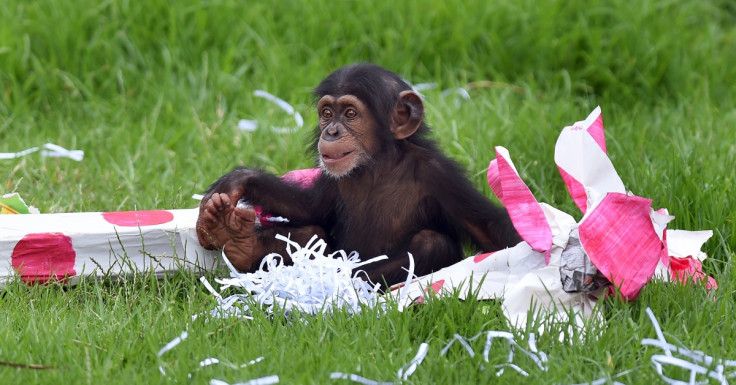Sex differences in chimp play show how females learn faster to become better tool users

Chimpanzee infants show sex differences when it comes to playing with objects, with females manipulating objects less but with purpose and males playing with no apparent goal other than having fun. The behaviour is much the same as is seen in human children, suggesting the trait dates back to the last common ancestor we shared.
Scientists from the University of Cambridge were studying the differences in tool use between humans, chimps and bonobos. Play with objects among immature chimpanzees is considered to be preparation for adult tool use and researchers found high rates of object manipulation among the juvenile chimps they studied.
Their findings, published in the journal PLOS One, showed young males spent more time playing with objects than females. In the wild, adult female chimps are far more competent tool users than males – suggesting there are sex differences in the purpose of play.
Researchers said most of the time male chimp object manipulation was associated with "play face", involving a relaxed expression where they laugh and cover their upper teeth. Females, on the other hand, showed lower rates of object manipulation but displayed far greater diversity of manipulation, such as carrying, breaking and biting objects, rather than the play-based repletion seen in males.
"Immature females seem to focus their attention on relevant tool use related tasks and thus learn quicker, whereas males seem to do more undirected exploration in play," the researchers wrote.
They said the similarities between human children and infant chimpanzees could mean that in males, the object manipulation serves for motor skill practice for male-specific behaviours like dominance displays, such as throwing objects.
Study author Kathelijne Koops said: "We suggest that the observed male bias in young chimpanzees may reflect motor skill practice for male-specific behaviours, such as dominance displays, rather than for tool use skills. It seems that not all object manipulation in immatures prepares for subsistence tool use. It is important to take the types of manipulation into consideration.
"Given the close evolutionary relationship between chimpanzees, bonobos and humans, insights into species and sex differences in 'preparation' for tool use between chimpanzees and bonobos can help us shed light on the functions of the highly debated gender differences among children."
© Copyright IBTimes 2025. All rights reserved.






















